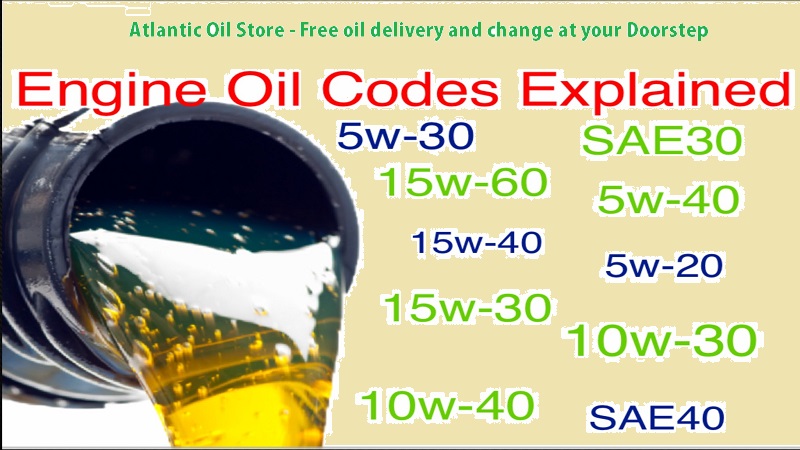
UNDERSTANDING OF ENGINE OIL GRADING OR VISCOSITY
Comments 0 October 20, 2018 engine oil grading, engine oil viscosity Engine Oil GuideHave you at any point questioned what the difference is between 5w30 and 0w20? Or on the other hand what would happen if you used the wrong oil in your car? These numbers are the viscosity grades of oil at low and warm temperatures and may have devastating effects on your car if you use the incorrect one!
OIL GRADES/ OIL VISCOSITY:
Oil Viscosity/ Oil Grades is the most misunderstood aspect of oil and yet it’s the foremost important. Oil Viscosity/ Oil Grades is the force needed to shear (break) the oil at a specific speed and temperature. Oils work since they have viscosity; the drag of a turning part pulls oil from a low-weight region into a high weight space and “floats” the surfaces apart. This can be known as “hydrodynamic grease” and crank bearings rely on it. Oil should be equipped for streaming at low temperatures, in order that it gets around the engine in a small amount of a second at start-up and should shield engine parts at high temperatures while not evaporating or carbonizing and maintain adequate oil pressure. The numbers on each container of oil show its performance characteristics when new but there are many misconceptions on what these numbers truly mean. For multi-grade oils, you will see two numbers (for monograde oils just a single). The primary is followed by a “w” and is usually 0, 5, 10, 15 or 20. The second number is usually higher than the primary and is often 20, 30, 40, 50 or 60. The primary and second numbers are not related.
what is engine oil Grading
Engine oil grades is a scale created by SAE (Society of Automotive Engineers) to demonstrate the engine oil performance at working temperature. Engine oil grades give us the proportion of its viscosity (resistance to flow) throughout the operation. The oils are positioned in 2 different ways, monograde and multigrade. Monograde oils, as the name suggests, must just satisfy one viscosity necessity. Monograde oils, like SAE30, square measure used for seasonal applications, such as lawn mowers and snow blowers. Multigrade oils like 5w30, however, must meet 2 viscosity needs and are intended for all-year-round use. We tend to use multigrade oils in our vehicles nowadays.
5W30 OIL, 10W40 OIL, 5W30 SYNTHETIC OIL:
The huge numbers on a bottle of oil like 5W30 oil or 10w40 oil refer to its viscosity. It’s inexactly characterized as the ‘flowability’ of the oil. Put in an unexpected way, thin oil has low viscosity, whereas thick oil has high viscosity. In this manner, for instance, beer has low viscosity and golden syrup has high viscosity. Simply do not put those in your engine… ambient temperature, i.e. how hot or cold it outside conjointly has an impact on the engine oil in your car. When it’s cool, the oil will stream more slowly, when it’s hot, the oil will stream more quickly. Nonetheless, in order to grease up an engine properly, the oil should be able to flow at a consistent rate through a broad range of temperatures. To put this in perspective, imagine a jar of golden syrup, place it in the fridge (at approximately 1-3 degrees C) for a couple of hours, at that point remove the cover and endeavor to spill the syrup out. It’ll start to stream anyway to a great degree gradually as the cool temperature has made it more viscous.
In a 5W-30 oil, for example, the number before the W depicts the viscosity of the oil at low temperatures. The lower the number, the thinner the oil and also the higher the oil’s cold temperature/ cold begin performance. The number after the W depicts how thick the oil is at the engine’s ordinary working temperature.
The lower the “W” number the better the oil’s cool temperature/chilly begin execution. The 40 in a 10w-40 engine oil merely suggests that the oil should fall inside beyond any doubt viscosity limits at 100°C. This is often a fixed limit and all oils that end in 40 must attain these limits.
5W-30 synthetic oil is an advanced full synthetic engine oil intended to keep your engine running like new by providing exceptional and extraordinary wear protection, cleaning power and overall performance. 5W-30 synthetic oil meets or surpasses the prerequisites of the industry’s toughest standards and outperforms the standard oils. Technology and innovation come as standard equipment in many different vehicles, together with select high-performance vehicles.


Leave a Reply